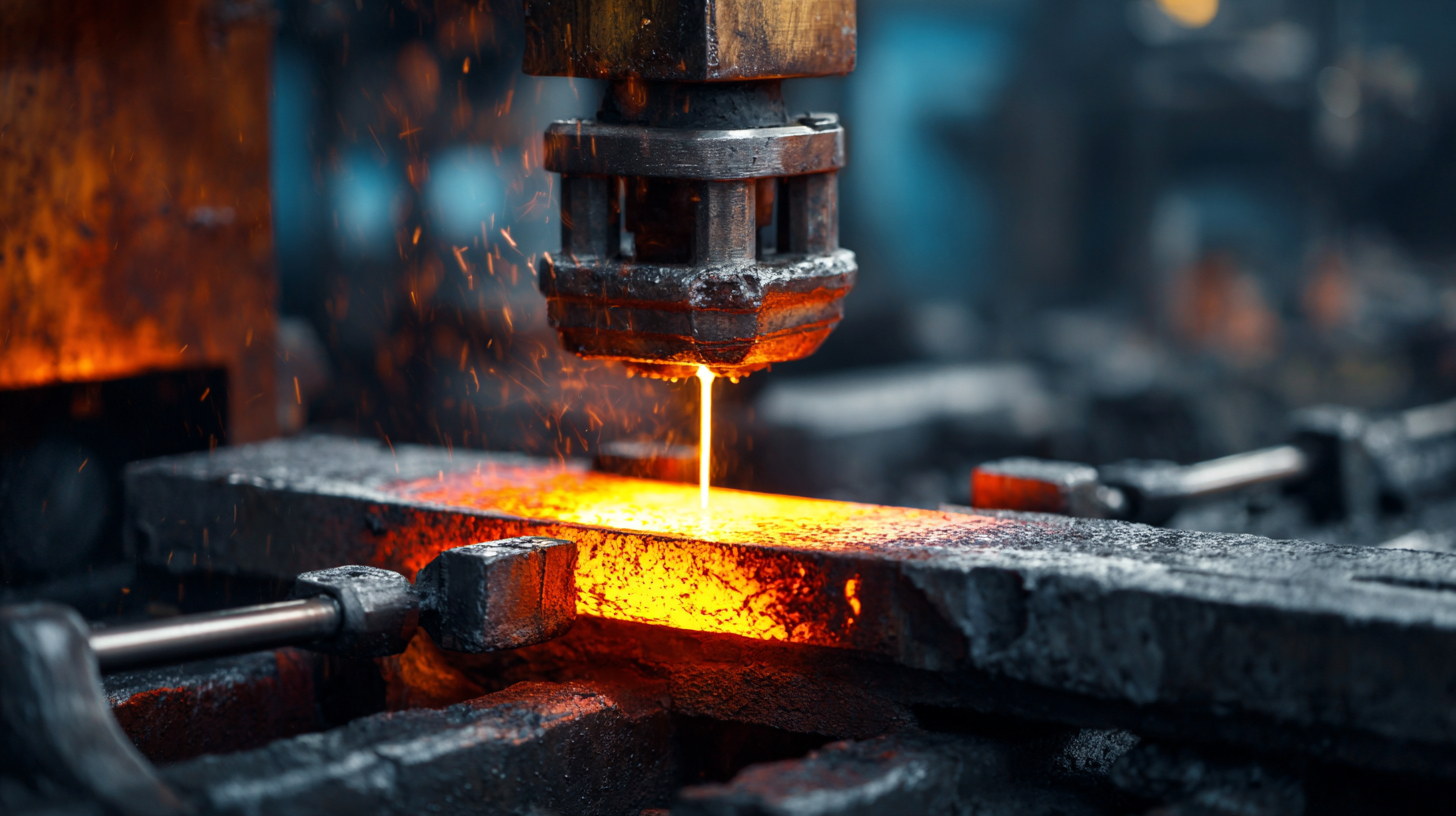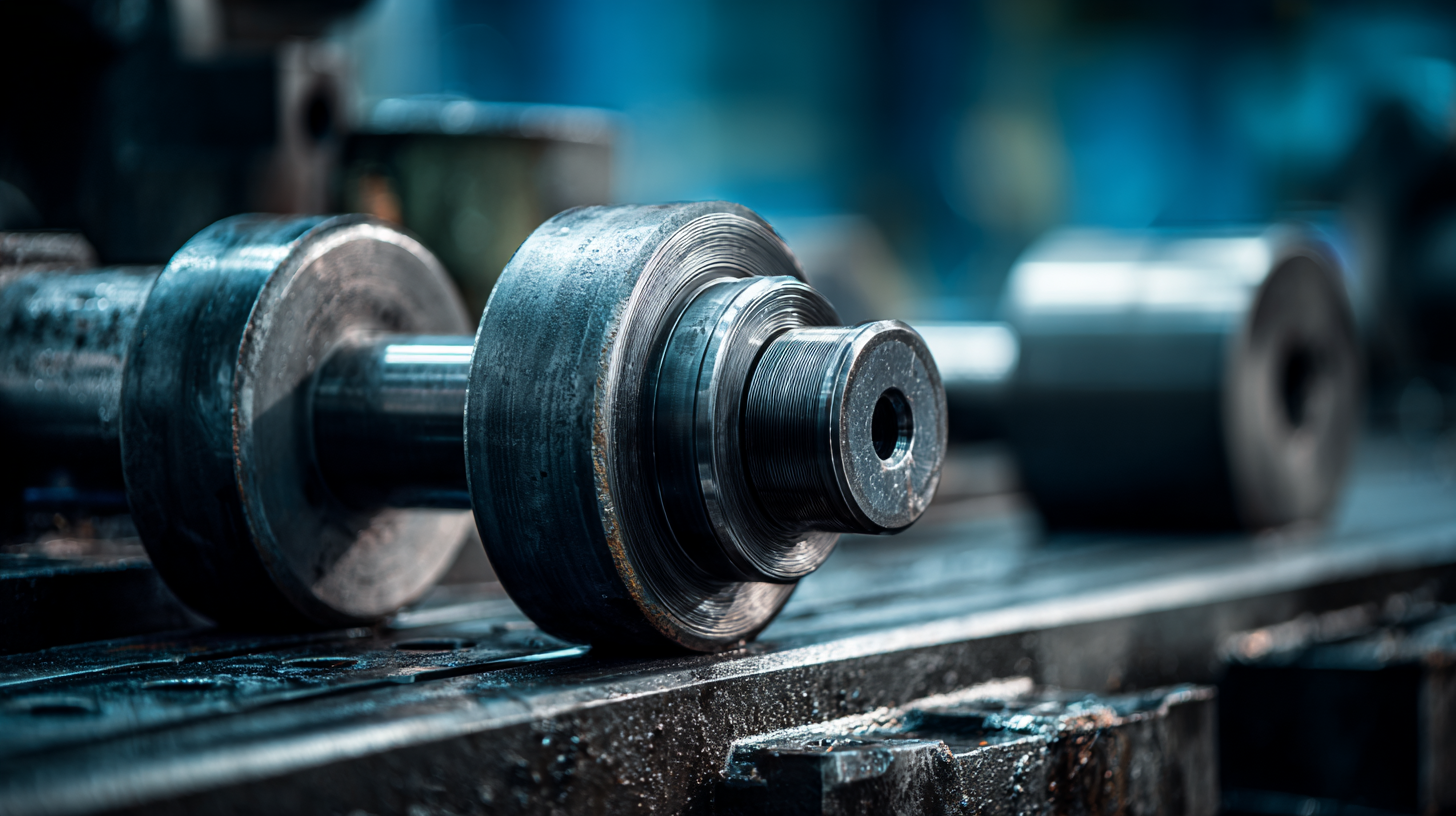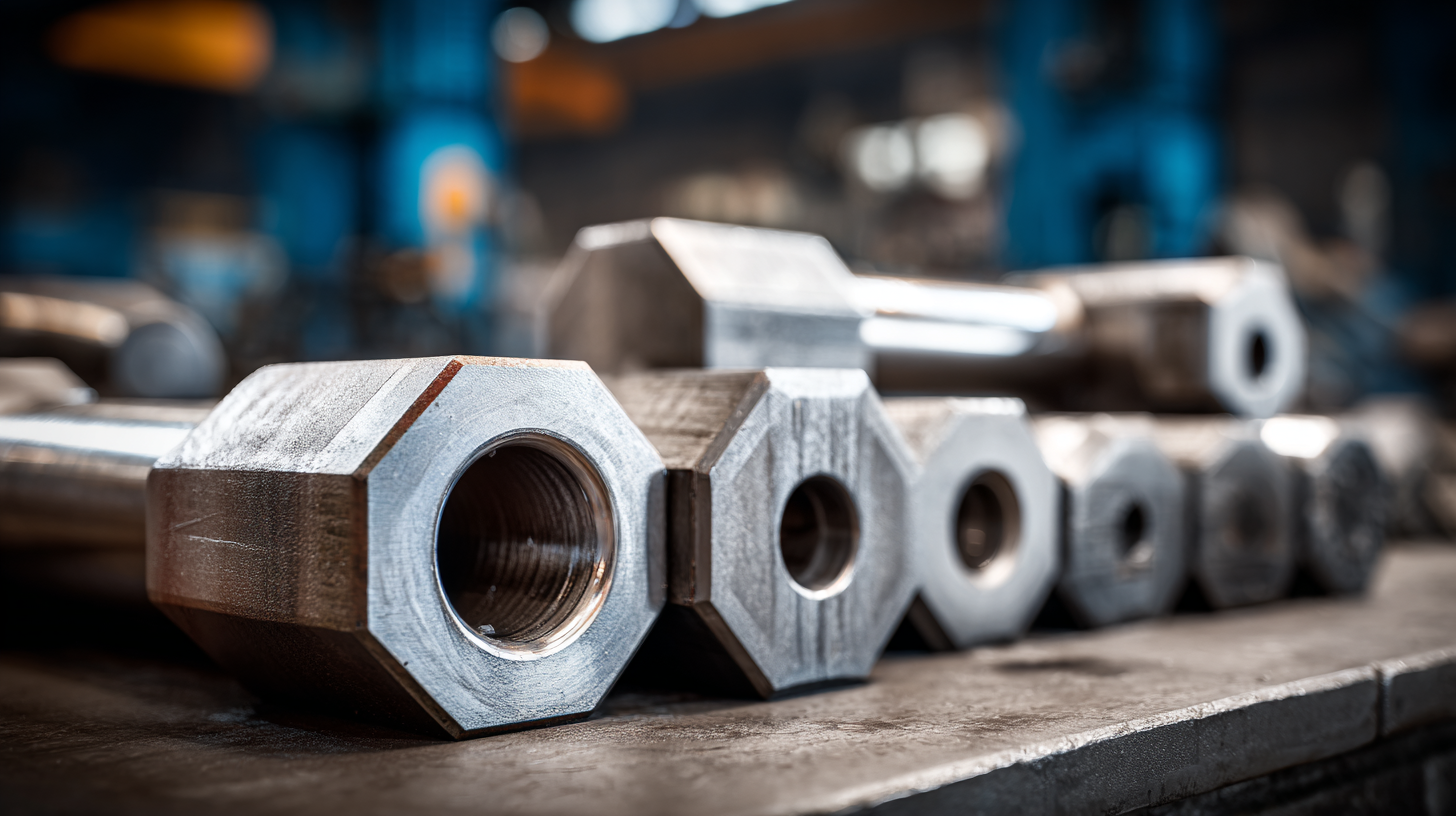Leave Your Message
-
Phone
-
E-mail
In today's highly competitive manufacturing landscape, selecting the right type of forging machine parts is crucial for optimizing production efficiency and achieving superior product quality. According to a report by Grand View Research, the global forging market is expected to reach USD 110.6 billion by 2025, growing at a CAGR of 4.5%. This significant growth underscores the increasing reliance on sophisticated forged components across various industries, including automotive, aerospace, and construction. Choosing the appropriate forging machine parts not only enhances operational efficiency but also reduces production costs and waste, leading to a more sustainable manufacturing process. As companies strive to meet rising demands and stringent quality standards, understanding the various types of forging methods and their respective advantages becomes essential for any production team aiming to gain a competitive edge.

 The material selection in forging machine parts is pivotal for achieving optimal production outcomes. Different materials exhibit unique properties that directly affect the performance, durability, and efficiency of forged components. For instance, using high-strength alloys can enhance the mechanical properties of parts, leading to longer service life and reduced failure rates. As industries push for higher production standards, choosing the right materials becomes more crucial than ever.
The material selection in forging machine parts is pivotal for achieving optimal production outcomes. Different materials exhibit unique properties that directly affect the performance, durability, and efficiency of forged components. For instance, using high-strength alloys can enhance the mechanical properties of parts, leading to longer service life and reduced failure rates. As industries push for higher production standards, choosing the right materials becomes more crucial than ever.
In the context of the rapidly growing CNC machine market, which is projected to reach significant milestones in the coming years, the importance of material selection cannot be overstated. Manufacturers are increasingly turning to advanced materials and technologies, such as 3D printing, to create parts that meet stringent industry requirements. By integrating innovative forging techniques and materials, production facilities can improve output quality and respond dynamically to evolving market demands. Ultimately, a strategic approach to material selection will not only streamline production processes but also contribute to the broader goals of quality improvement and sustainable development in manufacturing.
Advanced forging technologies play a pivotal role in enhancing manufacturing efficiency and product quality. By utilizing innovative methods such as
precision forging and closed-die forging, manufacturers can achieve tighter tolerances and superior material properties. These modern techniques allow for reduced waste and energy consumption, ultimately contributing to a more sustainable production process. Moreover, with the integration of automation and computer numerical control
(CNC) systems, the consistency and reliability of forged components significantly improve, ensuring a higher standard of output.
In addition to operational efficiency, advanced forging technologies lead to enhanced product quality. For instance, the use of high-speed forging presses can increase production rates while maintaining exceptional dimensional accuracy. This is particularly crucial in industries such as automotive and aerospace, where reliability and performance are non-negotiable. Furthermore, innovations like
heat treatment processes integrated within forging operations can optimize the hardness and strength of the materials, resulting in components that meet specific performance standards. By choosing the right type of forging machine parts aligned with these advanced technologies, manufacturers can drastically elevate their production capabilities and deliver superior products to the market.
Choosing the right type of forging machine parts is essential for optimizing production needs, especially in an industry projected to grow significantly. According to industry reports, the global market for metal forming tools was valued at $32.29 billion in 2018 and is expected to reach a compound annual growth rate (CAGR) of 4.9% through to 2032. This trend highlights the increasing demand for high-quality forged components, especially in sectors such as aerospace, which includes key components like wings and fuselages.
**Tip:** When selecting forging machine parts, consider the specific requirements of your production processes. Different materials, like alloys or synthetic materials, can greatly affect the performance and longevity of the parts.
Moreover, the revival of civil aviation since 2021, following the easing of pandemic-related restrictions, has led to a surge in aircraft orders and deliveries. This scenario not only stimulates growth in the aerospace sector but also emphasizes the need for reliable and efficient forging processes. High demand in military applications further underscores the importance of selecting the right forging techniques to meet stringent quality standards.
**Tip:** Stay informed about market trends and reports, as they provide valuable insights into which types of materials and components are forecasted to dominate the industry, allowing for strategic planning in production.
This chart illustrates the growth trends in the forging machine parts market from 2020 to 2025, showcasing the increasing demand across different sectors.
When it comes to selecting forging machine parts, evaluating cost-effectiveness is crucial for optimizing production needs. Different types of forging machines, such as open-die, closed-die, and drop forging, come with unique advantages and considerations that can significantly impact overall production costs. It’s essential to assess the upfront costs of the machines against their long-term operational efficiency and maintenance expenses.
**Tip:** Conduct a thorough cost-benefit analysis before making a decision. Factor in not just the purchase price, but also the expected lifespan, energy efficiency, and potential for automation. This approach ensures you select a forging machine that aligns with your financial and operational goals.
Another important aspect is the complexity of the components being produced. Some machines may excel at creating intricate designs but come at a premium cost. Balancing the complexity of the parts with the capabilities of the machine can help prevent overspending on unnecessary technology.
**Tip:** Engage with suppliers to understand the specific capabilities of various machines. Asking for case studies or examples of similar production needs can provide valuable insights into choosing the most cost-effective solution for your requirements.

In today's competitive manufacturing landscape, precision forging has emerged as a key driver for supply chain optimization. By utilizing advanced forging techniques, manufacturers can achieve tighter tolerances and superior material properties, leading to a reduction in waste and rework. This not only streamlines production processes but also enhances product quality, allowing companies to meet customer demands more effectively.
Furthermore, precision forging enables manufacturers to minimize lead times by allowing for faster production cycles. The consistency and reliability of forged parts mean that suppliers can maintain better inventory levels and reduce the risk of stockouts. As a result, the entire supply chain becomes more agile, responsive, and capable of adapting to fluctuating market needs. Consequently, investing in the right type of forging machine parts not only enhances production efficiency but also contributes significantly to the overall success of supply chain management in the manufacturing sector.
